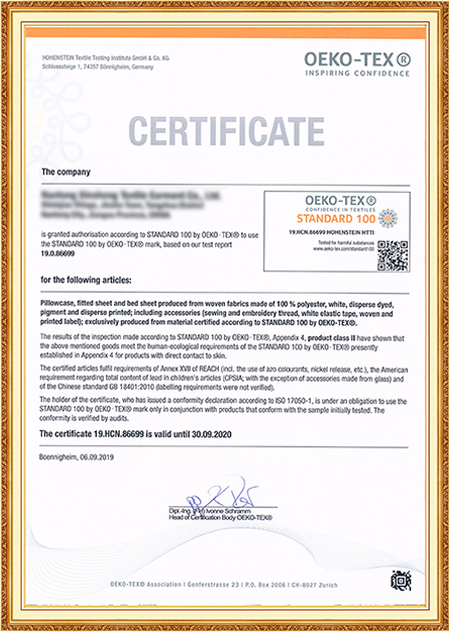The influence of ultrasonic frequency on ultrasonic sofa cover
Ultrasonic technology utilizes high-frequency sound waves to perform various tasks, including in the textile industry. In the context of ultrasonic sofa covers, the frequency of ultrasonic waves can significantly impact the effectiveness and quality of the processes involved.
Effects on Fabric Processing
Cleaning and Maintenance
Low Frequencies (20 kHz - 40 kHz): Lower ultrasonic frequencies are generally used for cleaning processes. They generate larger cavitation bubbles that can effectively remove dirt and debris from sofa covers. However, they might be less gentle on delicate fabrics.
High Frequencies (40 kHz - 1 MHz): Higher frequencies create smaller cavitation bubbles, which are more suitable for gentle cleaning. They can provide a thorough cleaning without causing damage to the fabric, making them ideal for delicate or high-quality sofa covers.
Fabric Bonding and Sealing
Low Frequencies: Lower frequencies can be used for bonding or welding fabrics together. They can generate more heat and force, which helps in creating strong, durable bonds. This is useful for creating seamless sofa covers or reinforcing areas prone to wear and tear.
High Frequencies: Higher frequencies offer more precise control and can be used for finer fabric bonding tasks. They can bond delicate or thin materials without causing significant thermal damage, which is crucial for maintaining the integrity of premium sofa covers.
Effects on Fabric Properties
Water and Stain Resistance
Low Frequencies: Low-frequency ultrasonic treatment can enhance the water and stain resistance of fabrics by applying protective coatings more uniformly. This is due to the higher energy and cavitation effects that can better disperse protective agents.
High Frequencies: High-frequency treatments are generally less effective at applying coatings but can still improve water and stain resistance by modifying the fabric surface at a microscopic level.
Fabric Texture and Feel
Low Frequencies: These frequencies may impact the texture of the fabric more noticeably, potentially making it stiffer or altering its natural feel. This could be desirable for some applications but may need to be carefully controlled to avoid compromising comfort.
High Frequencies: Higher frequencies are less likely to alter the texture of the fabric significantly. They provide a more subtle treatment that can enhance the fabric’s appearance and feel without drastic changes.
The ultrasonic frequency used in treating sofa covers plays a crucial role in determining the effectiveness and quality of various processes, from cleaning and maintenance to bonding and enhancing fabric properties. Low frequencies are suited for tasks requiring significant energy and force, while high frequencies offer precision and gentleness. Understanding these influences helps in selecting the appropriate ultrasonic frequency to achieve the desired results for ultrasonic sofa covers, balancing efficiency, fabric integrity, and environmental considerations.
Advantages of using ultrasonic bonding in sofa cover assembly
Ultrasonic bonding, also known as ultrasonic welding, is a technology that uses high-frequency sound waves to join materials together. In the context of sofa cover assembly, ultrasonic bonding offers several advantages over traditional methods. Here’s a look at the key benefits:
Strong and Durable Joints
Enhanced Bonding Strength: Ultrasonic bonding creates strong, reliable joints between fabric layers. The high-frequency sound waves generate localized heat, melting the fabric at the bond interface, which results in a durable and seamless join.
Consistent Quality: The process ensures uniform bonding strength across the entire seam, reducing the likelihood of weak spots or failures.
Precision and Control
Accurate Joining: Ultrasonic bonding provides precise control over the bonding process. This precision is especially useful for intricate designs or complex fabric arrangements, ensuring that the seams align perfectly without distortion.
Minimal Material Waste: The technology allows for exact placement of bonds, which minimizes material waste and helps maintain the integrity of the fabric.
Speed and Efficiency
Rapid Processing: Ultrasonic bonding is a fast process, often completing joints in a matter of seconds. This speed improves overall production efficiency and can significantly reduce assembly time.
Reduced Labor Costs: The automation of ultrasonic bonding reduces the need for manual labor, which can lower labor costs and streamline the manufacturing process.
No Need for Additional Materials
Eliminates Need for Adhesives: Unlike traditional bonding methods that may require adhesives, ultrasonic bonding uses the heat generated by sound waves to create a bond, eliminating the need for additional bonding materials or chemicals.
Cleaner Process: The absence of adhesives or solvents reduces the risk of contamination and makes the manufacturing process cleaner and more environmentally friendly.
Improved Fabric Handling
Minimized Fabric Distortion: The localized heating in ultrasonic bonding minimizes fabric distortion, which helps maintain the original appearance and texture of the ultrasonic sofa cover.
Gentle on Delicate Fabrics: Ultrasonic bonding is gentle on delicate or high-quality fabrics, reducing the risk of damage during the assembly process.
Enhanced Aesthetic Appeal
Seamless Appearance: Ultrasonic bonding produces smooth, seamless joints without visible stitching or thread, contributing to a cleaner and more polished appearance of the sofa cover.
No Puckering or Thread Damage: The absence of stitching eliminates issues such as puckering or thread damage, ensuring a consistent and aesthetically pleasing finish.
Reduced Post-Processing
Minimized Finishing Work: Since ultrasonic bonding produces a clean and secure bond, there is often less need for additional finishing work, such as trimming or edge sealing.
Less Rework: The reliability of ultrasonic bonding reduces the need for rework or repairs, improving overall production efficiency.
Ultrasonic bonding offers numerous advantages for sofa cover assembly, including strong and durable joints, precise control, rapid processing, and reduced need for additional materials. Its versatility and environmental benefits make it an attractive option for modern textile manufacturing, enhancing both the efficiency and quality of sofa cover production.



 English
English Español
Español عربى
عربى
















 +86-159 5050 0822
+86-159 5050 0822 peter@rainbowhomefashion.com
peter@rainbowhomefashion.com No.199 Yimin Road, Dateng DIstrIct, Yancheng City. Jiangsu Province, China
No.199 Yimin Road, Dateng DIstrIct, Yancheng City. Jiangsu Province, China
